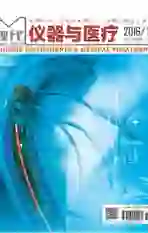化学发光法与酶联免疫吸附法进行血HIV检测效果评价
2016-11-19段美婷兰良子
段美婷 兰良子
[摘 要] 目的:比较化学发光法与酶联免疫吸附法在血液HIV检测中的应用效果。方法 :对本院2014年 3月至 2015年 9月期间所有术前检查病人利用化学发光法和酶联免疫吸附法进行HIV筛查试验检测。结果:35420例病人血清标本中,化学发光法和酶联免疫吸附法均判定阳性29例,金标准免疫印迹法(WB)确定25例为阳性,4例为阴性。化学发光法阳性酶联免疫吸附法阴性的10例,WB检测结果阳性8例,阴性2例。化学发光法比酶联免疫吸附法真阳性率高,但是假阳性率也增加。通过对比S/CO不同值,发现化学发光法假阳性率出现在S/CO≤500,并且随着S/CO值降低,假阳性率升高明显;S/CO>500,化学发光法准确性明显升高。结论与酶联免疫吸附法相比,在一定范围内,化学发光法更适用血液HIV筛查。
[关键词] 化学发光法;酶联免疫吸附法;人类免疫缺陷病毒
中图分类号:R446 文献标识码:B 文章编号:2095-5200(2016)05-078-03
[Abstract] Objective: To compare the application effects of chemical luminescence method method and enzyme-linked immunosorbent assay on the detection of HIV in blood. Methods: All patients in our hospital from March 2014 to September 2015 were examined by using chemiluminescence and enzyme-linked immunosorbent assay for HIV screening test. Results: In 35420 cases of serum samples, 29 cases were both positive through the methods of chemiluminescence and enzyme-linked immunosorbent assay, and the gold standard Western blotting (WB) confirmed that 25 cases were positive and 4 cases were negative. 10 cases were tested for positive through chemical luminescence method method but for negative through enzyme linked immunosorbent assay, and its WB test results were positive in 8 cases, negative in 2 cases. The true positive rate of chemical luminescence method method was higher than that of enzyme-linked immunosorbent assay, but the false positive rate was also increased. Through the comparison of different S/CO values, we found that the false positive rate of using chemical luminescence method method occurred as S/CO≤500, and with the decrease of S/CO value, false positive rate increased significantly; as S/CO>500, the accuracy of chemical luminescence method increased significantly. Conclusions: Compared with the enzyme-linked immunosorbent assay in a certain range, the chemical luminescence method is more suitable for HIV screening in blood.
[Key words] CLIA; Elisa; HIV
获得性免疫缺乏综合征简称艾滋病(AIDS),是由人类免疫缺陷病毒(human immunodeficiency virus, HIV)引起的一种严重传染性疾病。酶联免疫吸附法(Elisa)最早应用于艾滋病毒的筛查,1985年研制成功的第一代HIV Elisa试剂[2]敏感性和特异性欠佳,至今已发展至第四代。Gag基因编码HIV病毒核心蛋白包括p17、p24、p15[3-7],P24在血清转换的很短时期内就可以被第四代试剂检测出来,因此第四代HIV Elisa试剂将检测的“窗口期”从三代的22天左右减少到16天左右[8]。
化学发光法(CLIA)的主要原理[9]是将酶免疫发光物质标记在抗原或抗体上,加入氧化剂或酶底物而发光,通过标准曲线测定发光强度来确定待测物的含量。本实验将化学发光法和酶联免疫吸附法两种检测方法进行对比评价。
1 材料与方法
1.1 标本来源收集
本院2014年 3月至 2015年 9月期间所有术前检查病人共计35420例,年龄10~89岁,其中男性24003例,女性11417例。
1.2 试剂
HIV抗原抗体联合检测试剂盒(上海恒远科技有限公司),化学发光酶免试剂 (北京科美东雅生物技术有限公司),人类免疫缺陷病毒(HIV1+2型+p24)抗体免疫印迹试剂盒(简称WB,新加坡 Genelabs)。
1.3 方法
1.3.1 Elisa法检测HIV病毒 Elisa检验血清HIV抗体采用双抗原夹心法。包被:将抗体稀释至蛋白质含量为1~10μg/mL,在每个聚苯乙烯板的反应孔中加0.1mL,4℃ 过夜。第二天,弃孔内溶液,缓冲液洗涤;加样:加待检样品于上述反应孔中,置37℃孵育1h(同时做空白孔、阴性对照孔及阳性对照孔);加酶标抗体:在各反应孔酶标抗体37℃孵育1h,缓冲液洗涤;加底物液显色:向各反应孔中加TMB底物溶液,37℃ 10min;终止反应:于各反应孔中加入硫酸。
1.3.2 CLIA法检测HIV病毒 CLIA法检验模式为双抗原夹心一步法免疫分析,借助于HIV(1+2)抗原制作出固相抗原,并将HIV(1+2)抗原采用辣根过氧化物酶进行标记,由此和待测样品中的HIV抗体两者就可以形成双抗原夹心,洗涤之后,将化学发光底物液加入其中 ,测定其发光值。
1.3.3 免疫印迹检测法(WB)检测HIV病毒 HIV进行培养、浓缩、纯化;HIV抗原在SDS-聚丙烯酰胺凝胶电泳按照分子量大小而分离;将分离的抗原转移到硝酸纤维素膜上,将其切割成包含全部病毒蛋白的按照分子量大小排列的条膜;在反应槽中加待测样品与条膜孵育,洗涤;加辣根酶标记的二抗;加显色试剂。
1.4 判断标准
化学发光法:S/CO≥1.00 为阳性,< 1.00 为阴性;Elisa法按照说明书。
1.5 确认实验
将Elisa法或CLIA法筛选的阳性病例35例进行复检,复检仍为阳性病例用免疫印迹法进行确认。WB试验阳性的判为HIV感染;若为阴性,判为未感染HIV;若WB试验为可疑,4周后随访复查,复查为阳性判为HIV感染,否则判为未感HIV。
1.6 统计学处理
使用SPSS11.0软件系统,计数资料进行χ2检验或Fishers确切概率法检验,P<0.05为差异有统计学意义。
2 结果
2.1 CLIA法与Elisa法检测结果
35420例术前检查病人中,用CLIA法筛检出抗-HIV抗体阳性39例,阳性率为 0.110%;Elisa法筛检出抗-HIV抗体阳性29例,阳性率为 0.082%。与Elisa法相比,CLIA法阳性率比较高,两组间比较差异有统计学意义(P<0.05)。
2.2 WB确认实验
从表1中可以看出,WB和CLIA均阳性为33例,CLIA真阳性率为0.093% ;WB和Elisa均阳性为25例,Elisa真阳性率为0.071%。比较CLIA和Elisa两种方法,CLIA的真阳性率、假阳性率都升高。
2.3 CLIA 检测不同S/CO值与W B 对比结果
从表2结果可见,CLIA检测S/CO值>500 时,WB确认实验 均为HIV阳性;CLIA 检测结果S/CO值≤500时,WB确认实验有可能为阴性;S/CO值越低,W B检测结果为阴性的可能性越大。
3 讨论
据报道[10]全球约有3亿多人携带艾滋病毒,而我国在1985年发现首例艾滋病患者,到2014年二十年时间,患病人数已经达到10.4万例,患者分布也从单一省份扩增到全国20多个省。性传播、 经血传播和母婴垂直传播[11-13]是人类感染HIV病毒的三条途径,而血液传播是主要途径。因此早期筛查血液HIV病毒,对HIV患者的早诊断具有重要价值。
1998年Elisa第四代试剂问世,第四代Elisa试剂可以同时检测p24抗原和HIV 1+2抗体,有效缩短了“窗口期”,因此得到广泛应用。但是由于一项检测同时与病毒、抗体结合,增加了相互干扰的机会,从而降低了第四代Elisa试剂的灵敏度和特异性[14-15]。而化学发光法[16-17]作为新型的免疫学检测技术,因其灵敏度高较高。
从本实验结果来看,化学发光法的真阳性率高于Elisa法,说明化学法试剂能在HIV病毒抗体效价较低时发挥作用,检测患者HIV阳性,因此更有效避免临床漏诊现象。但是我们发现化学发光法的假阳性率也有所增加。通过对比S/CO不同区间,化学发光法的假阳性率发生在S/CO≤500并且随着S/CO值降低,假阳性率升高明显。因此在用化学发光法筛查血液HIV病毒,在S/CO值比较低时,应注意对此病例的复检,同时加做WB,避免假阳性的情况出现。
综上所述,化学发光试剂灵敏度高,操作简单,非常适合血液HIV病毒的早期筛查。但是应注意假阳性率高的问题,通过进一步实验进行确认,提高HIV筛查质量。
参 考 文 献
[1] Zahra RT, Kayhan A ,Ehsan M,et al. Development of an integrase-based ELISA for specific diagnosis ofIndividuals infected with HIV[J]. Virological Methods ,2015,2(15):61-66.
[2] Crowl R, Ganguly K, Gordon M, et al.HTLV-III env gene products synthesized in E.coli are recognized by antibodies present in the sera of AIDS patients. [J]Cell ,1985,41(3):979-986.
[3] Gurtler L, MuhlbacherA, MichlU, et al.Reduction of the diagnostic window with a new combined p24 antigen and human immunodeficiency virus antibody screening assay[J].Virol. Methods,2003,75(1):27-38.
[4] Brust S, Duttmann H, Feldner J,et al.Shortening of the diagnostic window with a new combined HIV p24 antigen and anti-HIV-1/2/O screening test[J].Virol Method,2000,90(2):153-165.
[5] Ly TD, Plantier JC, Leballais L, et al. The variable sensitivity of HIV Ag/Ab combination assays in the detection of p24Ag according to genotype could compromise the diagnosis of early HIV infection. [J ]Clin Virol, 2012,55(2):121-127.
[6] Tang S, Zhao J, Wang A, et al.Characterization of immune responses to capsid protein p24 of human immunodeficiency virus type1 and implications for detection[J].Clin Vaccine Immunol: CVI,2010,17(8):1244-1251.
[7] DolcettiR,GiagulliC,HeW,etal.Role of HIV-1 matrix protein p17 variants in lymphoma pathogenesis[J].Proc Natl Acad Sci USA,2015,112(46):14331-14336.
[8] Kafaie J,Dolatshahi M,Aiamian L,et al. Role of capsid sequence and immature nucleocapsid proteins p9 and p15 in Human Immunodeficiency Virus type 1 genomic RNA dimerization[J].Virology,2009,385(1):233-244.
[9] 孙显光,里天初,李志坚. 化学发光酶免疫试剂与 ELISA试剂检测 H IV抗体的对比分析 [J] . 贵州医药 ,2009 ,2 (33):161-162.
[10] Schur FK, Hagen WJ, Rumlova M, et al. Structure of the immature HIV-1 capsid in intact virus particles at 8.8 A resolution[J].Nature, 2015, 517(7535):505-508.
[11] Sanchez-Conde M, Miralles P, Bellon JM, et al. Use of transient elastography for the noninvasive assessment of portal hypertension in HIV/HCV-coinfected patients[J].Viral Hep,2011,18(10):685-691.
[12] Paredes R, Lalama CM, Ribaudo HJ, et al. Pre-existing minority drug-resistant HIV-1 variants, adherence, and risk of antiretroviral treatment failure. [J]Infectious diseases, 2010, 201(5):662-671.
[13] Garcia-Diaz A, Guerrero-Ramos A, McCormick AL, et al. Evaluation of the Roche prototype 454 HIV-1 ultradeep sequencing drug resistance assay in a routine diagnostic laboratory[J].Clinical virology,2013,58(2):468-473.
[14] 殷竹君,杨启生,田玲玲,等.生物梅里埃第4代 HIV初筛试剂假阳性率增高问题的探讨[J].中国国境卫生检疫杂志 ,2007,30(2):73 -74.
[15] Ki m S ,Lee JH, Choi J Y ,et at .False-Positive Rate of a “Fourth-Generation ”HIV Antigen/Antibody Combination Assay in an Area of Low HIV Prevalence[J].Clin Vaccine Immunol,2010 ,17(10):1642 -1644 .
[16] 李璐,邢文革.化学发光技术在 HCV和HIV检测中的应用 [J].中国艾滋病性病,2011,17(3):382-385.
[17] 单东红,许建波,钱萍芳等.探究窗口期弱阳性抗体血清在选择抗-HIV 检测试剂中的重要意义[J].中国性科学,2015,(6):67-69.
